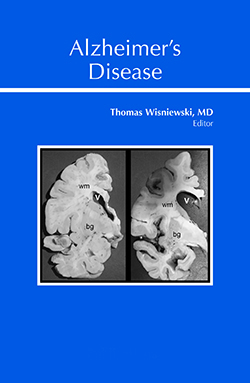N-Terminally Truncated Aβ Peptide Variants in Alzheimer’s Disease
Main Article Content
ABSTRACT
The accumulation and aggregation of amyloid-β (Aβ) peptides in the brain is believed to be the initial trigger in the molecular pathology of Alzheimer’s disease (AD). In addition to the widely studied full-length Aβ peptides (mainly Aβ1–40 and Aβ1–42), a variety of amino-terminally truncated (N-truncated) peptides, such as AβpE3-x and Aβ4-x, have been detected in high abundance in autopsy samples from sporadic and familial AD patients. N-truncated Aβ species adopt specific physicochemical properties resulting in a higher aggregation propensity and increased peptide stability, which likely account for their neurotoxic potential. The presence of N-truncated Aβ peptides in transgenic mouse models of AD and the selective overexpression of specific N-truncated variants in the murine brain have facilitated their investigation in relevant in vivo settings. In this chapter, we address the pathological relevance of N-truncated Aβ peptide species and summarize the current knowledge about the enzymatic activities that might be involved in their generation.
Downloads
Metrics
Article Details

This work is licensed under a Creative Commons Attribution-NonCommercial 4.0 International License.

